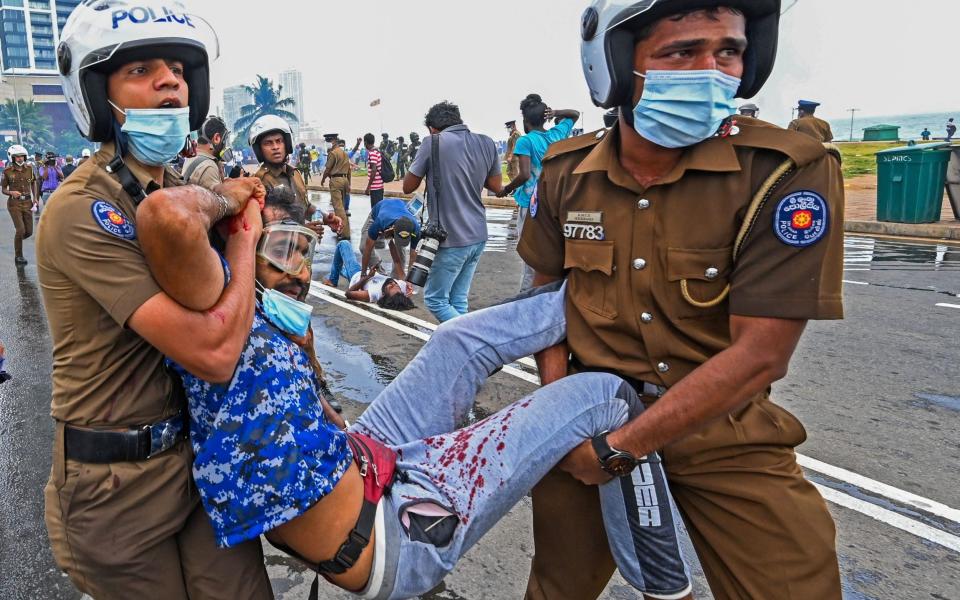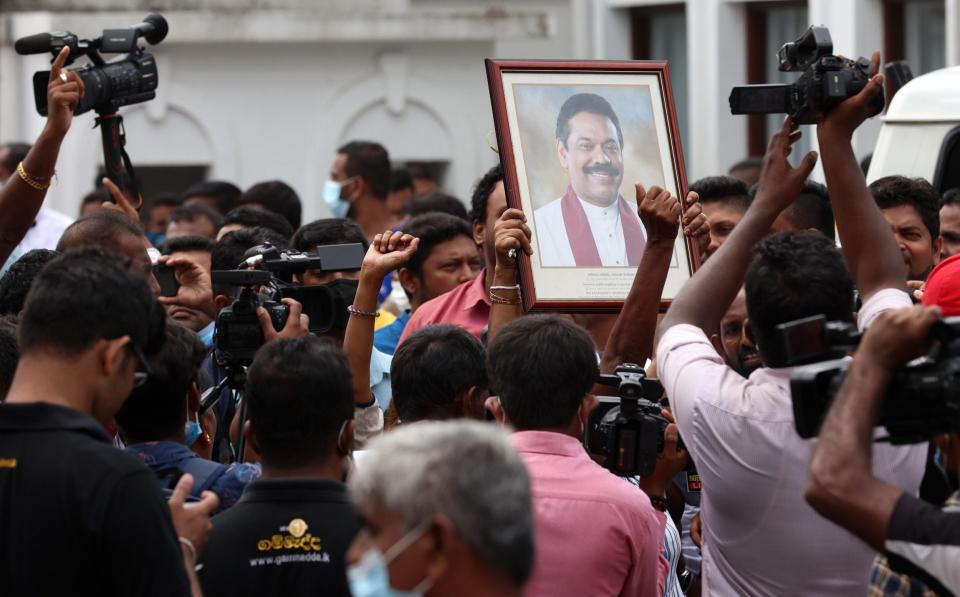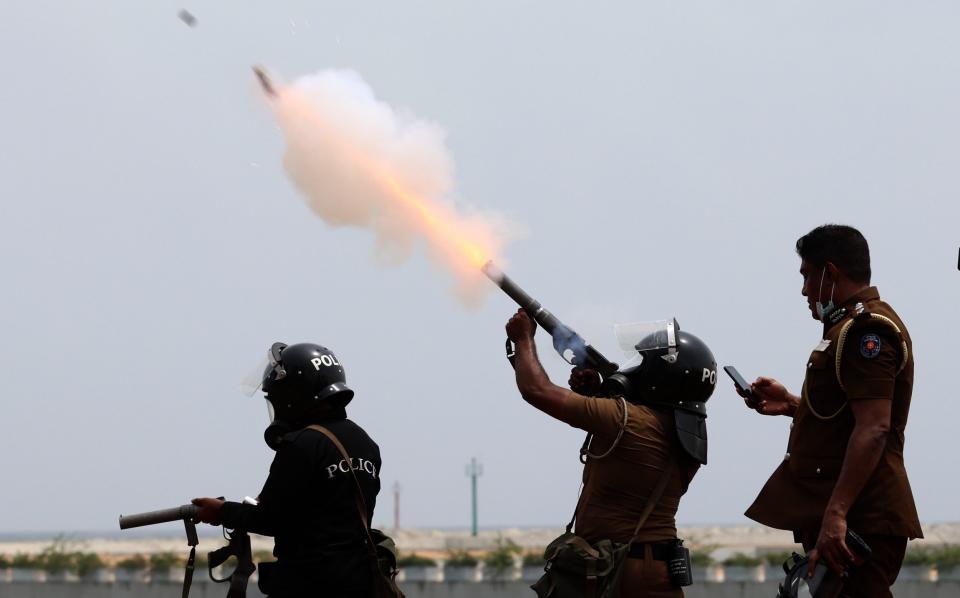Sri Lanka prime minister holed up in residence as mob violence sweeps country
Watch: Sri Lanka PM quits as death toll from political violence rises
Sri Lanka’s outgoing prime minister was on Monday evening holed up in his official residence after thousands of angry protesters broke through the main gate, as a wave of mob violence swept the country.
The country was on the brink of collapse on Monday following a day of turmoil that saw an MP take his own life after killing a protester, several politicians’ homes set alight and a museum dedicated to the leader’s family razed to the ground.
In Colombo, police fired shots in the air and tear gas to prevent demonstrators from reaching Mahinda Rajapaksa in his Colombo complex just hours after he quit.
Officials said the military deployed hundreds of troops to guard him and his aides as protesters defied an indefinite curfew declared earlier in the day to maintain their siege on his residence.
Mr Rajapaksa handed in his resignation after a pro-government mob armed with clubs attacked anti-government protesters in Colombo earlier in the day, injuring over 150 people.

The incident caused widespread discontent over a major economic crisis that has been bubbling for weeks to finally boil over.
The homes, offices and vehicles of at least five ruling party MPs believed to have either been involved or supported the attack were torched on Monday evening in retribution.
Dozens of buses used by Rajapaksa loyalists to travel to Colombo earlier in the day were also destroyed or damaged.
In the suburb of Maharagama, mobs ordered the leader of the group out of the bus and tossed him into a garbage cart, before smashing the vehicle with a bulldozer.

Violence across the country led to at least five people dying on Monday, police said, as the situation threatened to spiral into anarchy.
One MP, Amarakeerthi Athukorala, allegedly killed one person after he shot at anti-government protesters that were blocking his car in the town of Nittambuwa, some 25 miles outside of Colombo.
He later killed himself as well after being cornered by a mob. “The MP fled the scene and took refuge at a nearby building. Thousands surrounded the building and he then took his own life with his revolver,” said the police.
Watch: Lawmakers' homes set on fire in Sri Lanka unrest
Two more people died in the southern town of Weeraketiya after a ruling-party politician opened fire on anti-government protesters, officers said.
People also attacked the controversial Rajapaksa museum in his ancestral village of Meda Mulana in the south, razing the building to the ground and flattening two wax statues of the former leader’s parents, police said.
Sri Lanka's army was deployed onto the streets amid fears of further violence overnight.
The last few weeks have seen Sri Lanka brought to a standstill by peaceful nationwide protests, demanding regime change as the country continues to endure the worst economic crisis in its history, with residents unable to purchase food, fuel or essential medicines.

Monday's nationwide unrest was sparked by violence that broke out in Colombo in the morning after a large pro-government mob attacked protesters who had peacefully been demanding regime change over a cost of living crisis.
Police looked on as the mob, who were armed with clubs and sticks, injured 150 people and destroyed Colombo’s Galle Face protest site, where tens of thousands of people have gathered since April 9.
“This is a peaceful protest,” Pasindu Senanayaka, an anti-government protester told Reuters, “They attacked Gota Go Gama and set fire to our tents. We are helpless now, we are begging for help.”
The mob had allegedly been bussed to Colombo from across Sri Lanka to hold a demonstration in support of the ruling Rajapaksa family but afterwards, went on to storm the protest site.
Anti-government protests have swelled in size over the last week, demanding Gotabaya Rajapaksa, Sri Lanka’s president, and his brother Mahinda, resign, and on Friday, a nationwide state of emergency was declared.
Sri Lanka faces one of the world’s worst economic crises. Gross macroeconomic mismanagement and corruption means Colombo owes £21 billion to international debtors and has just £1.7 billion in reserve.
Unable to import enough essential goods from abroad, rampant inflation has caused the price of essential foodstuffs like rice to triple since January.
Sri Lanka’s largest medical union has also declared an emergency as the country has run out of many drugs and medical equipment, including life-saving cardiac medication and cancer drugs.
Protect yourself and your family by learning more about Global Health Security

 Yahoo News
Yahoo News 
